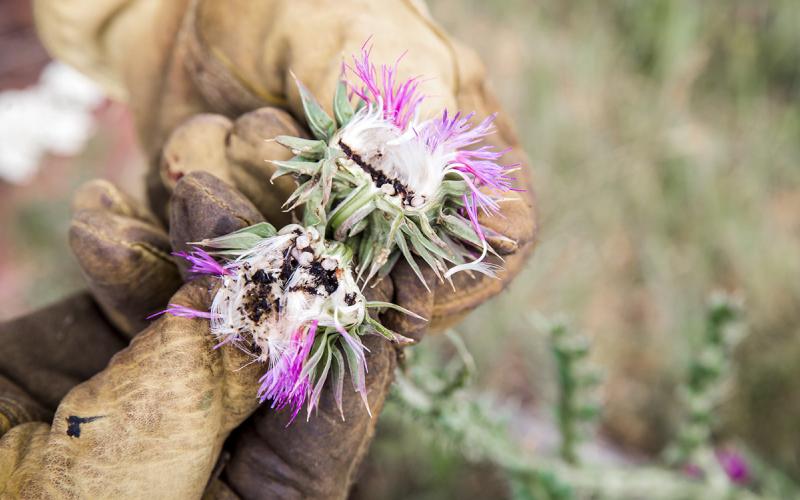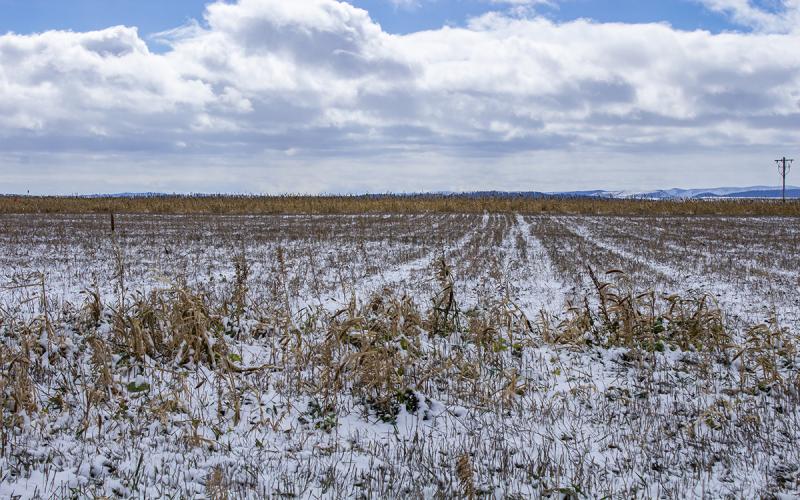Written collaboratively by Eric Jones, Philip Rozeboom, Jill Alms, and David Vos.
Woolly cupgrass has not been a weed of great interest since the introduction of Roundup Ready (glyphosate-tolerant) crops. However, pre-Roundup Ready crops, woolly cupgrass was difficult to manage in many crops, such as corn and spring wheat. Recently, woolly cupgrass has started to resurge in South Dakota crops. Compared to other grassy weeds (such as the foxtail species), woolly cupgrass is difficult to manage due to the large seed and tolerance to select herbicides. Proper identification of woolly cupgrass will ensure proper selection of management tactics.
Identification
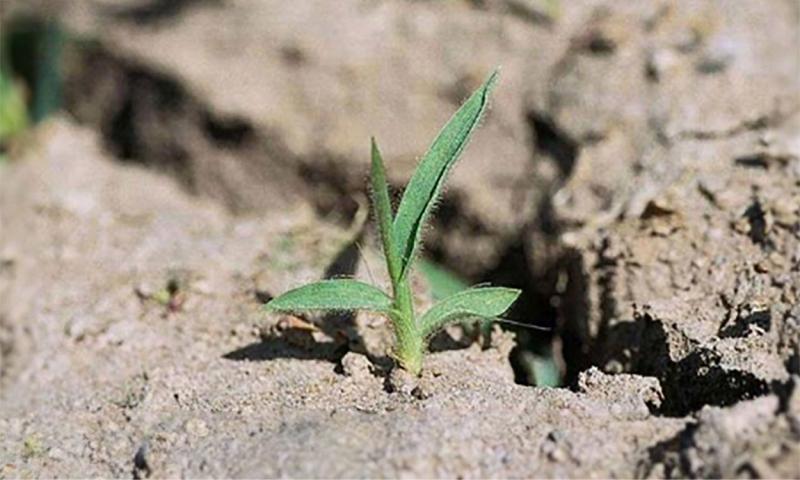
Woolly cupgrass is one of the first-emerging grass weed species. One key identifying characteristic of woolly cupgrass is that its first-emerging leaf is large compared to many other grass weeds (Figure 1). First leaves of woolly cupgrass usually grow off the stem parallel to ground from the stem.
As woolly cupgrass plants mature, their leaves begin to form a distinct “wavy” edge on the side of the leaf (Figure 2). Additionally, woolly cupgrass leaves are covered in short hairs that can be felt by hand, but they are difficult to see.
Mature woolly cupgrass plants exhibit branched seed heads that contain two rows of seeds. Further examination will reveal that all the rows of seeds occur on the same side, which is another key identifying characteristic (Figure 3).
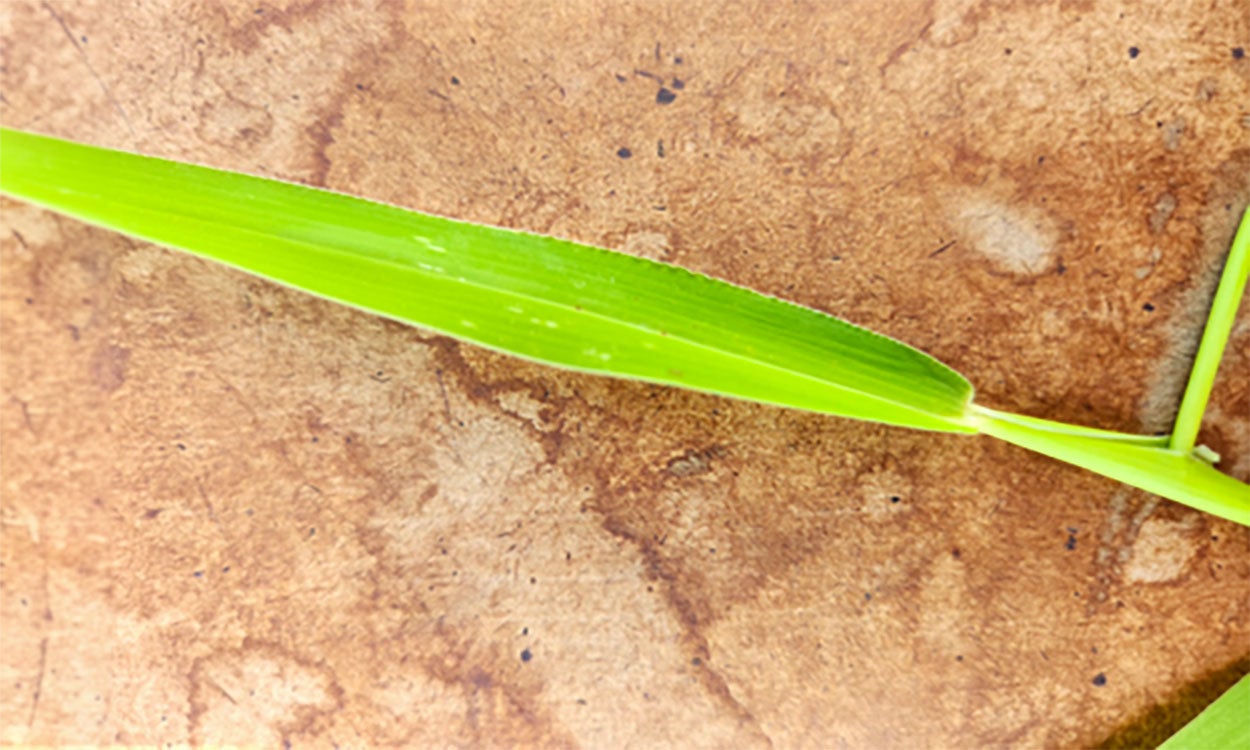
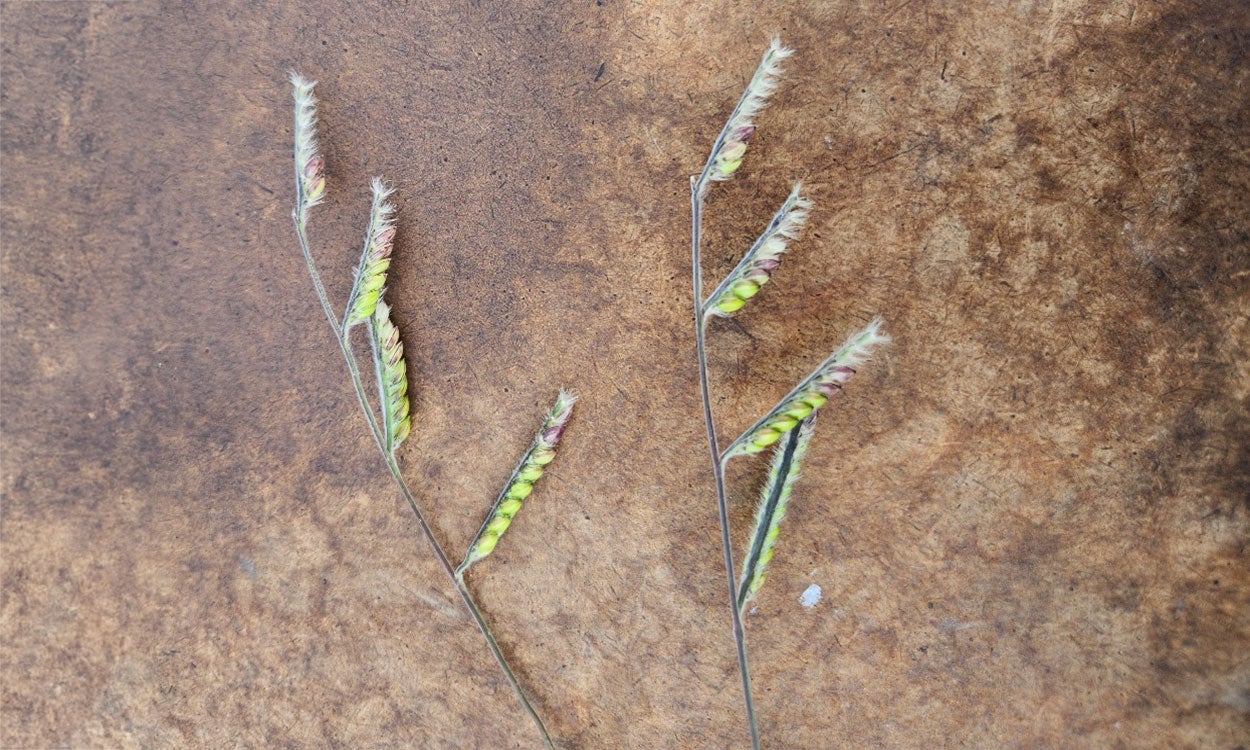
Management With Herbicides
Corn
Premergence: Acetochlor (Harness) is one of the more-effective Group 15 herbicides; S-metolachlor (Dual II Magnum) and pyroxasulfone (Zidua) provide suppression. Apply multiple herbicide groups to increase effectiveness.
Postemergence: Glyphosate (Roundup, others) is one of the most-effective herbicides on woolly cupgrass if the corn is tolerant. Glufosinate (Liberty, Interline, Cheetah) is effective if the corn is tolerant. If Enlist (2,4-D-tolerant) corn is planted, then quizalofop (Assure II) can be applied for effective management. Managing woolly cupgrass is a challenge in conventional corn. Nicosulfuron (Accent) and nicosulfuron+rimsulfuron (Steadfast Q) are the more-effective herbicides to manage woolly cupgrass in conventional corn. While effective, the herbicides need to be applied when the weed is small (2 to 4 inches in height).
Soybean
Preemergence: Pendimethalin (Prowl, Satellite), ethalfluralin (Sonalan) and trifluralin (Treflan, others) are the more-effective preemergence herbicides to manage woolly cupgrass. Note that ethalfluralin and trifluralin will need to be incorporated after application, while pendimethalin can be applied early preplant (up to 15 days before planting). Similar to corn, the Group 15 herbicides (acetochlor, dimethenamid [Outlook], S-metolachlor, pyroxasulfone) will provide suppression.
Postemergence: Glufosinate and glyphosate are effective if the soybean is tolerant. The Group 1 herbicides (aka grass killers, graminicides) (including: clethodim [Select], sethoxydim [Poast], quizalofop, and fluazifop [Fusilade]) are effective and can be applied in conventional soybean. Sethoxydim may be the more-effective Group 1 herbicide for woolly cupgrass.
Wheat
Preemergence: Delayed preemergence herbicide applications (applied after wheat emerges) of pendimethalin can control later-emerging woolly cupgrass plants in wheat fields. Delayed preemergence applications of pyroxasulfone can provide suppression of woolly cupgrass in wheat fields. Producers should be sure to apply these herbicides at a true delayed preemergence timing, otherwise wheat plants can be injured.
Postemergence: Pinoxaden (Axial Fenoxaprop [Puma]) will be effective on woolly cupgrass in wheat fields. Pinoxaden (Axial) is not labeled to control woolly cupgrass, but the herbicide can provide suppression to smaller woolly cupgrass plants (those that are 2 inches in height) in wheat fields.
Refer to the latest South Dakota Pest Management Guides for a complete list of herbicides. Refer to the respective herbicide label before spraying for application use and restrictions.
Management Without Herbicides
While woolly cupgrass is primarily managed with herbicides, other tactics used together can be effective. Cultural tactics, such as fertilization, planting date, and row spacing, can help make the crop more competitive with woolly cupgrass and other weeds. Crop rotation (planting a broadleaf crop) will facilitate managing woolly cupgrass, but Group 1 herbicides can be applied. Mechanical tactics, such as hand weeding and mowing, are effective, but are likely appropriate in small, isolated patches where plants have grown too large to spray. Use multiple tactics in conjunction with herbicides for effective management of woolly cupgrass and other weeds.
